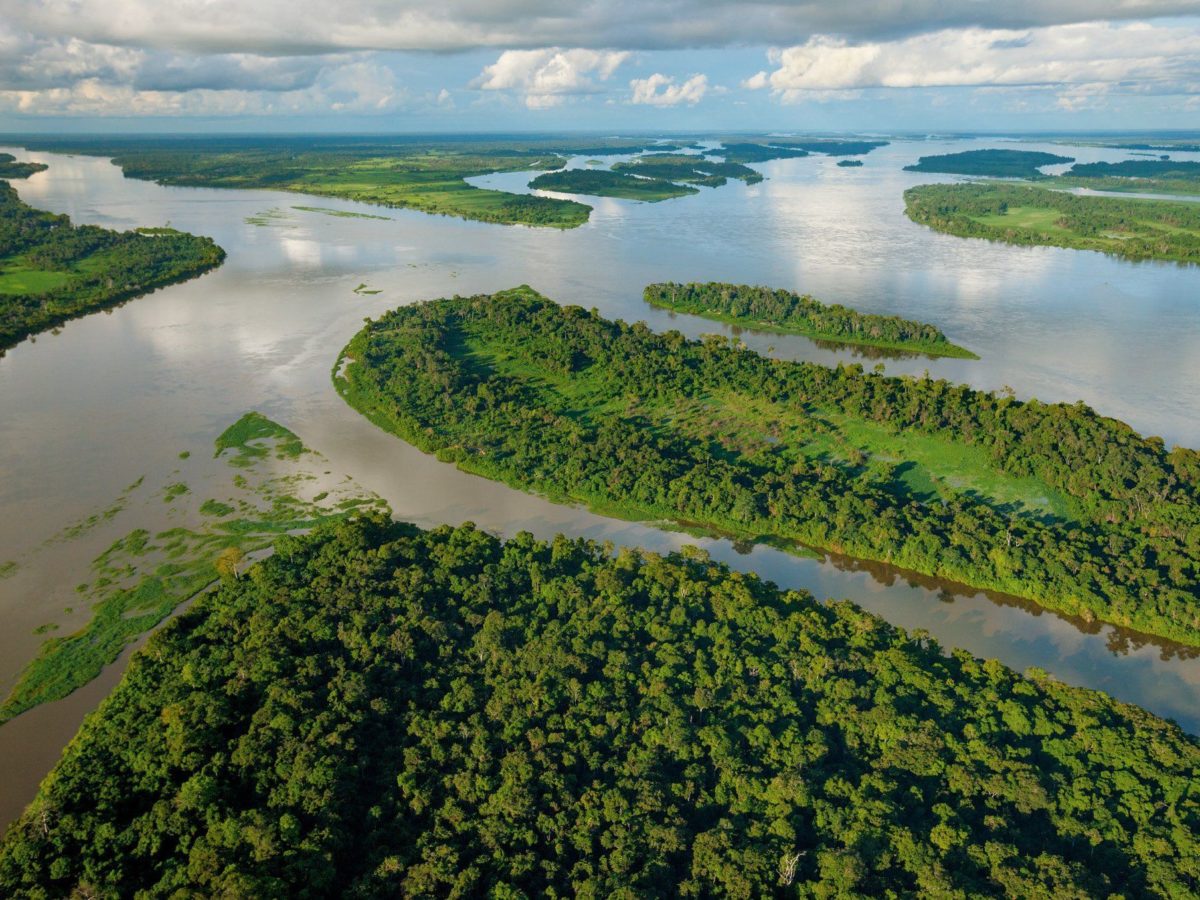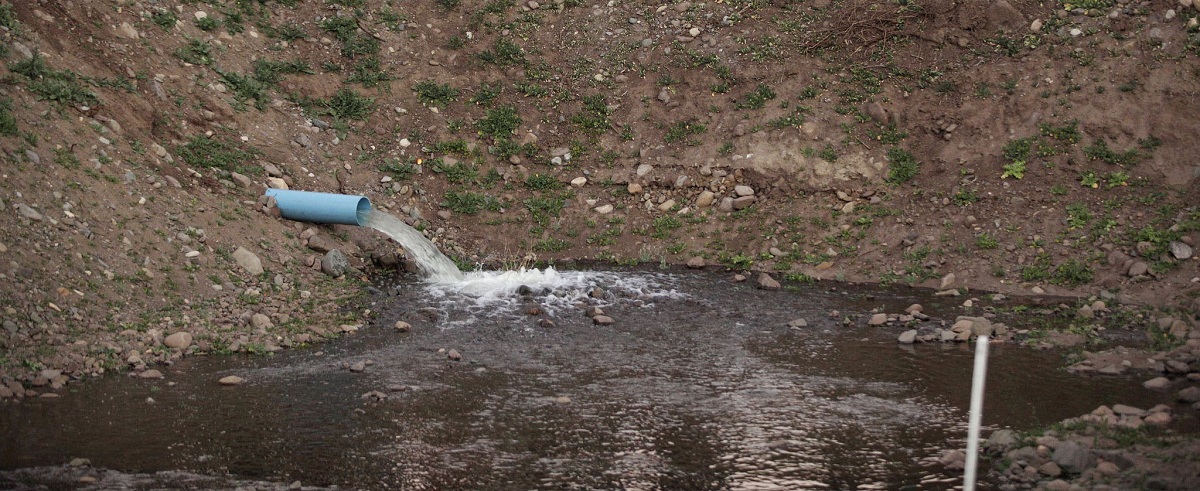
Although the Congo river It is one of the most spectacular rivers in the world, it was not discovered by Western culture until the end of the 1482th century. In fact, many stories begin with the arrival of the Portuguese. The Congo River is one of the most important rivers on the hydrological map of the world, but it was not known to the West until XNUMX.
In this article we are going to tell you about the characteristics, geology and biodiversity of the Congo River.
Key features

Along its route, which crosses Zambia, the Democratic Republic of the Congo, the Republic of the Congo and Angola, the feeling of greatness is timeless and indescribable. The deepest river in the world is also home to a unique and diverse fauna. In this sense, the Congo it has many micro-habitats with different ecological conditions, which makes it possible for its rich biodiversity.
This African river is the second largest in the world, the second longest and the second deepest on the African continent and provides a tropical environment that supports thousands of species in its basin. Its name comes from the Kingdom of the Congo, one of the most important sub-Saharan countries before the arrival of the settlers.
The Congo River is located in east-central Africa, with a drainage area of approximately 4,01 million square kilometers. Connects countries of Congo, Democratic Republic of Congo, Rwanda, Angola, Burundi, Cameroon, Central African Republic, Zambia, Tanzania. and Gabon, although in some basins there is almost no penetration. It is estimated that it is about 4.700 kilometers long and carries an average of 41.000 cubic meters per second of water., partly because it receives an average of 152 cm of rain per year. His figure flexed slightly and he crossed the equator twice.
The source of the Congo River is as confusing as the sources of other rivers, but the river is generally believed to have originated in the highlands of the East African Rift Valley in northeastern Zambia, between Lake Tanganyika and Lake Niassa. Its source is likely to be the Changbei River at an altitude of about 1.760 meters. It is injected into the Atlantic Ocean with bananas in the Democratic Republic of the Congo. The river is arc-shaped, divided into Upper Congo, Central Congo and Lower Congo, fed by tributaries such as Lulonga, Aluwimi, Mongara and Kasai.
Upper Congo originated in the Great Rift Valley of East Africa and ended at Stanley Falls, starting from Central Congo and continuing north for several kilometers.
Passing through Kisangani in the Democratic Republic of the Congo, the river turns to the west and soon continues to flow to the southwest. The characteristic of this middle part is that there are no rapids or waterfalls, so it can be navigable. The Lower Congo crosses the city of Kinshasa, from this point it widens, with rapids in some areas.
Formation of the Congo river

The shape and channel of the fifth longest river in the world are not very old. Most of the basin are Mesozoic sediments, but also Paleozoic and neoproterozoic sediments have been found.
Obviously, before the Mesozoic, the Congo was the upper course of another river that flowed from east to west through Gondwana, but the separation of this land led to the emergence of two new blocks: Africa today and South America today, thus changing the route of the river and the shape of other bodies of water. The Congo River took its current shape sometime in the Pleistocene between 150.000 and 200.000 years ago.
Flora and fauna of the Congo River
Due to the tropical climate where the river is located and the rich minerals contributed by each area of water in the surroundings, it has a rich basin of biodiversity. Hundreds of species of fish swim in its waters and 7 of the 10 fish families in Lake Tanganyika have evolved in its waters. The most abundant fish belong to the families Ciclidae, Mormyridae, Characidae, Distichitodontidae, Mochokidae, Bagridae, Cyprinidae and Siluriformes. Crocodiles and turtles, like many primates and waterfowl find their perfect homes in their watershed.
Of the aquatic plants the water hyacinth, the lilies and the aquatic ferns stand out.
Economic importance
The Congo River has been a transportation route for the ancient Bantu people. It is also a source of food for all the nearby ethnic groups. Its economic importance is similar to that of the Nile River. European explorers have sailed most of its routes and they still connect towns and cities today due to the lack of safe roads in the area. Products such as sugar, coffee, cotton, copper, and palm oil are often transported from one place to another and, until recently, ships were the most important means of transport for river navigation.
More than 75 million people depend on the resources of the Congo River, including medicines, water, infrastructure materials, shelter and, of course, food. Various dams and hydroelectric power plants have been built along the river to provide electricity to humans.
Some fish, such as those in the groups Protopterus, Parachanna, Bagridae, Characidae, and Distichodontus, can be caused by overfishing, the introduction of non-native Congolese species, and deforestation. Deforestation and the misuse of the watershed's resources reduce the quality of the waters and the organisms that live in them.
The forests of the Congo river basin accumulate 8% of all carbon stored in the earth's forests, making it the largest carbon pool in Africa and the fourth in the world. However, approximately 85% of this virgin forest has been destroyed and logging threatens the rest of the forest. Estimates of deforestation in Central Africa in 2050 predict that only in the Democratic Republic of the Congo will release 34,4 billion tons of carbon dioxide.
Tens of millions of people depend on the forest to survive. In the Democratic Republic of the Congo alone, 40 million people live in these forests. In this part of the world, all culture lives directly from the forest for shelter, health, food, and cultural and spiritual survival.
I hope that with this information you can learn more about the Congo River and its characteristics.
